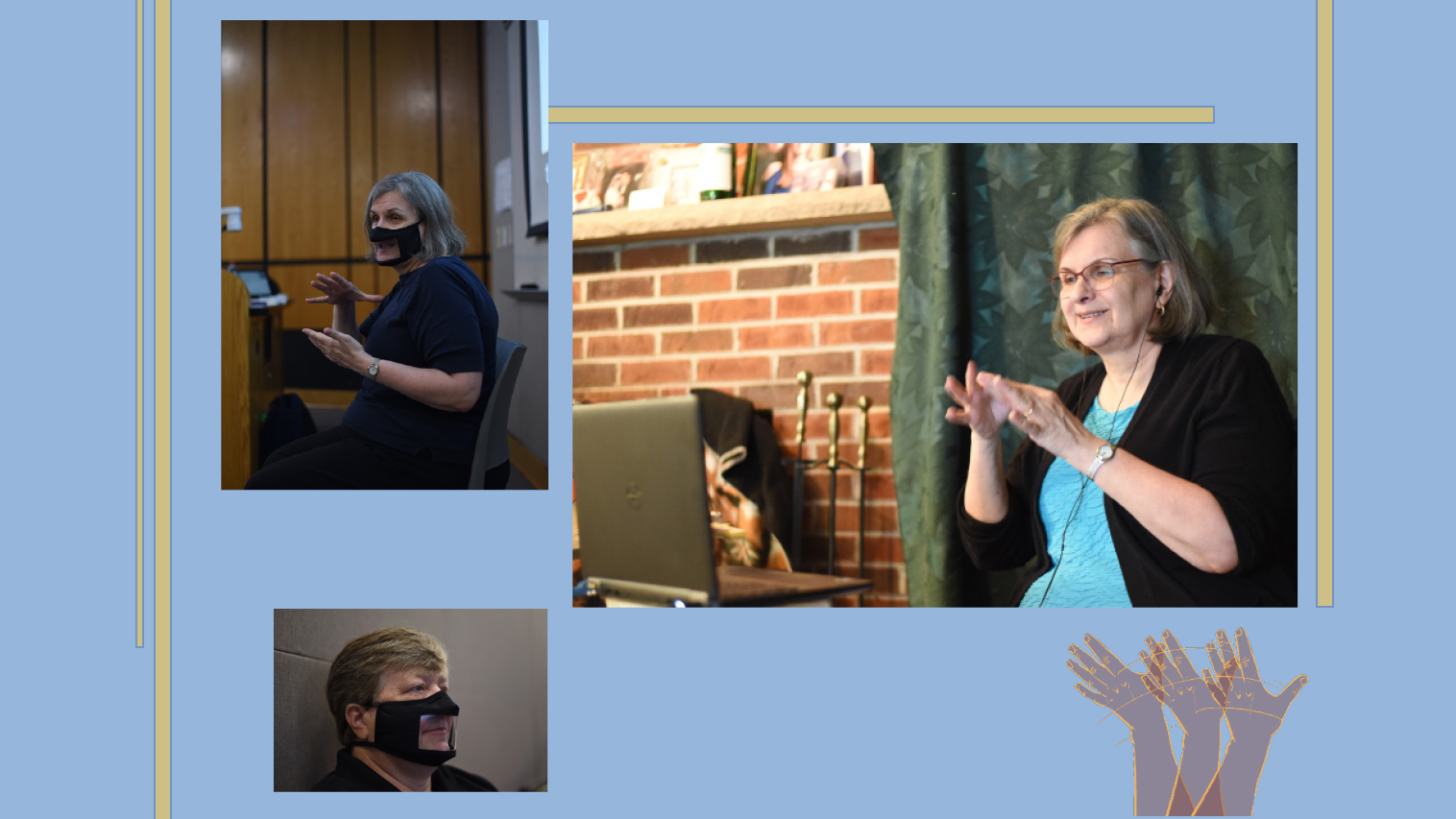Over and over again, we talk about the cataclysmic shifts we have all had to make due to this pandemic. The need to adapt is inevitable, and RIT is no exception. With NTID and the Deaf and hard-of-hearing communities on and off campus, how does this unfamiliar territory translate into our access services?
"We have to adjust to these challenges no matter what they may be."
Z(D)oom
The overall problem interpreters are facing with Zoom right now is the loss of control they normally have over the environment by using a software that is designed for hearing people. In a classroom, interpreters can direct their services to a student or students within the classroom, adjust off of their feedback and assist in the most effective way for that individual or group. Zoom does not provide options to pin multiple people on the call at once, which limits the amount of exposure an interpreter has to the students. Not to mention, taking a 3-D language and converting it to a screen makes it difficult at times for getting messages across.
Christine Spencer, associate interpreter for the Science Core Team at RIT, discussed some of the pressures interpreters are experiencing with this switch.
“When we work online, we are working in a 2-D venue, it’s a lot different than 3-D, in person. You can’t see the depth of the movements. Also Zoom was never designed to be used for interpreters,” Spencer said.
Spencer went on to explain the difficulties of moving to an online learning environment; there is a lot more confusion on scheduling and difficulty for individuals to adjust to all of these scenarios as they come. For example, a certain class may be online one day and in person the next day. One student that needs services may be quarantining while the other one is in class, causing a lot of anxiety for interpreters and the program itself. This extreme variability isn’t only for the location of the students and classes, but also the reliability of the equipment — faulty WiFi could lead to periods of time where a student is without translation.
Amanda Dole, sign language interpreter for the Art and Design Team at RIT, agreed with Spencer.
“The platform and this technology is not conducive for signing [people who sign], or use a non-spoken language; it’s all auditory,” Dole said. “It’s a limitation.”
M(ah)sks
During this time in the U.S. where everyone must wear masks in public spaces, sign language — which relies heavily on non-manual markers for conveying a message — struggles.
Hilary Maag, an interpreter working in primarily Video Remote Interpreting and university environments, spoke about the changes she made to her signing to address the deficit.
“I had to interpret the structure differently, using as much emphasis as possible, and a lot of different eyebrow movements so that she (the deaf student) could get the message,” Maag explained.
Maag sees this pandemic as less of an obstacle and more of an opportunity to adapt to the new access services that are needed for these unprecedented times. She stated that interpreters should not just be interpreting the words, but providing access to this message — reading the deaf person enough to receive feedback, and adjusting their signing based on said feedback. However, this becomes increasingly difficult when, as stated earlier, interpreters aren't always able to see the students they are assisting over Zoom. So, they need to adjust.
“How I interpret over the computer is different than how I interpret in person,” she explained. “How I interpret with a mask is different than without a mask.”
Another point was brought up, however, about the challenges faced by students who rely heavily on lip reading during class. With all professors and interpreters wearing masks, the access for these students diminishes.
In an effort to avoid this issue, RIT has provided masks with a clear window to all students and NTID faculty, but they are still very far from perfect. While some have avoided the issue of fogging up by using shaving cream or dish soap, there is still the struggle of using them for students who are not sitting directly in front of you.
Mari Gillum, sign language interpreter for the College of Art and Design Team at RIT, stated that in a social distancing situation, you may have one student sitting in front of you and two others sitting six feet apart on either side. This causes all but the center student to miss these non-manual markers, even with the clear mask.
"How I interpret over the computer is different than how I interpret in person."
The Bottom Sign
With a pandemic comes new anxieties and pressures for everyone in the workplace. Many interpreters are finding it difficult to trust the students they are working with — how can they be sure they haven't come into contact with COVID-19? It’s hard to be in such a variable situation when you can only control and trust your own health. This field has been hit with constant adaptations and adjustments in order to cope with the degradation of accessibility that came with COVID-19.
Some, like Maag, have even stopped taking interpreting jobs in hospitals in order to protect themselves and their families from infection.
“All of us always have different challenges that pop up,“ Maag said. “We have to adjust to these challenges no matter what they may be.”
It is important to pay attention to the amount of work and stress that goes into the roles within access services, and in the words of Mari Gillum, “understanding what interpreters and captionists do every day is more than what meets the eye.”
However, even with all of these extra points of anxiety, Gillum, Dole and Spencer all expressed how impressed and grateful they were for the NTID Interpreting Program throughout this huge shift. There seems to be a lot of support within the department and reliable communication throughout.
“We’re in it together,” Gillum said.








